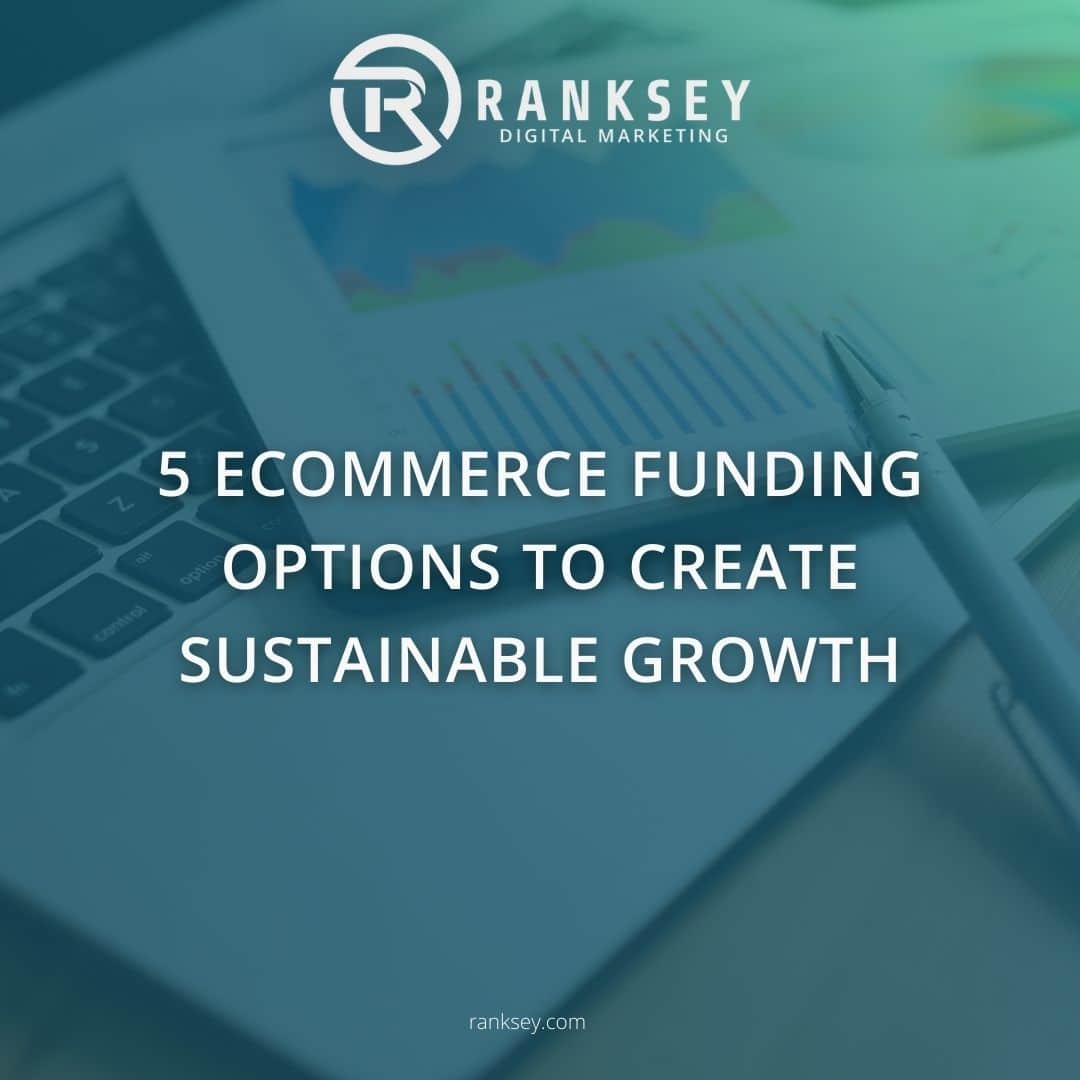The dizzying pace of technology’s progress has made eCommerce an ever-growing part of people’s lives. Today the industry is seeing continuous year-on-year growth, making it an excellent time to become an online seller. Many new businesses are flocking to eCommerce platforms, eager to establish themselves in this lucrative market. But success doesn’t happen overnight, to really get your project off the ground you will need the right kind of funding. Online selling can mean having to order several batches of product months before any revenue comes in. A poorly timed cashflow crunch can completely derail a promising online store. In this article, we will discuss some of the best eCommerce funding options to create sustained, long-term growth.
Why It’s So Important To Be Properly Funded
Like with every other business, eCommerce stores are prone to unforeseen disruptions. Supply chains can be highly unpredictable since they are vulnerable to everything from the weather to changing import laws, to global events like the COVID-19 pandemic. Having extra funding on hand can allow you to respond to disruptions as quickly as possible. Shipping a batch of inventory via air freight, for example, is one great solution to supply chain delays. While it is more expensive than sea transport, it is significantly faster, meaning you can avoid a stockout and the strain on your store that comes with it.
Another upside of having more cash on hand is being able to order more frequent shipments of inventory. Ordering larger batches that arrive every four months probably means lower costs on a per-item basis. However, any significant disruptions can leave you without inventory for long stretches of time. Having smaller shipments come in every two months might cause more initial expenses, but can lead to huge savings and fewer headaches further down the line.
Running out of stock can be a major issue on platforms like Amazon, which will lower your store’s ranking if your products aren’t available. A customer experience is worsened when they want to buy a product, only to discover it isn’t available. That means all eCommerce sites are incentivized to rank stores that experience frequent stockouts lower, leading to lost sales.

Bank Loans
A bank loan is one of the most traditional forms of financing around. You apply for a loan from the bank and they check your financial status to determine whether to fund you and under which conditions. This process can take several weeks and usually requires significant paperwork. Banks are very careful about whom they give money so they do a lot of background research, such as checking your credit history. They will do what they can to determine as accurately as possible that you can reliably repay your loan.
A bank is able to lend large sums of money, but you might pay high interest rates, depending on the terms of your deal. Since banks are more willing to give money to businesses with large sources of income, small businesses are likely to get harsher repayment terms. This can include having to offer assets as collateral in case you can’t repay. A better credit history will always yield superior conditions, so larger companies are at an advantage.
Revenue-based funding
Revenue-based funding is great for businesses that are already seeing healthy sales. This type of financing is given based on the income a company makes. The larger its income, the larger the loans it is eligible for. Revenue-based funding is repaid with a cost of capital at the end of every month. This can range from 5% to 25% of monthly revenue, but conditions are highly variable and depend on the kind of deal you get. A good accounting history and business performance can result in more favorable conditions. Unlike more traditional loans, revenue-based funding doesn’t require a good credit history, since it centers around the performance of your company. Even those with moderate revenue are usually eligible for this form of financing, making it great for many eCommerce sellers. The money is repaid at the end of each month, as a percentage of revenue. If your income dips, so does the amount you need to pay back. This means you are never at risk of having to pay more than you can afford.
Merchant Cash Advance
With a Merchant Cash Advance (MCA) you get a sum of funding that you repay as a percentage of your credit card sales. A portion of each transaction goes towards the repayment, meaning your income will be reduced until everything is repaid. Because the lender has this guaranteed income, the terms of an MCA tend to be favorable. Additionally, unlike bank loans, for example, the process of applying and getting approved is significantly faster.
Business owners apply and the MCA provider works with a bank to decide what level of funding is appropriate. Your income and business health will play the biggest role in this matter. Once you get approved you are allowed to use the funds however you like, which isn’t the case for many other types of financing. This can provide some important flexibility, which is important in the ever-changing world of eCommerce.
Business Grants
Business grants are provided to companies by some organizations or programs, usually sponsored by the government. While most of this funding is earmarked for special purposes, such as important research, some of it is available to eCommerce sellers. Many grants are made available to companies run by people from disadvantaged or minority backgrounds, and in sectors or locations where the government wants to promote economic growth.
Business grants are often given under great conditions, some don’t even need to be paid back, but they tend to require a lot of paperwork. You will need to do serious research to find grant programs that you qualify for. Then you need to complete your application, which can be far from simple. Many companies hire grant writers for this specific purpose.
Additionally, many business grants have tight restrictions on how you can spend the funding. Organizations providing them often expect regular reports on how you are spending their money. While the economic benefits of business grants are clear, it is important that you are able to comply with all the bureaucratic requirements involved. If you are, going down this path can lead to making important connections with organizations and people that might be able to provide more funding in the future.
Crowdfunding
This is a good solution for eCommerce sellers that have a great idea for a product but lack the funding to sell it at scale. If you are in the early stages of your operations this might be a promising way to get the financing you need. While other types of loans require that you already have a strong sales history, crowdfunding has no such conditions. You will, however, need enough funds to pay for your crowdfunding listing, which should include high-quality photos, videos and copy in order to create excitement.
The most important part of succeeding with a crowdfunding project is to come up with a product that is unique and highly interesting to consumers. A good marketing campaign can generate a lot of excitement but the product’s attractiveness will have the biggest sway in the end. While crowdfunding doesn’t require giving up equity, some businesses encourage it to make people feel more invested in the project. If you are willing to do so, this can help you raise more funds. Alternatively, most companies offer rewards, such as limited versions of the product, to investors that offer large sums of money.
Growth Capital
If you seek the kind of funding that doesn’t disrupt your cash flow, you may want to consider an 8fig Growth Plan. It entails receiving regular and continuous cash injections that you spend however you think is best for your business. 8fig’s free-to-use platform allows you to map out and optimize your supply chain to ensure sustained and long-term growth. You maintain full equity and stay in complete control of your company. There are no hidden fees or interest, and nothing has to be offered as collateral. Instead, you agree on a cost of capital that you repay over a pre-arranged timeframe. This remittance schedule is extremely adaptable, meaning that you maintain maximum cash flow at all times. Check out 8fig and start your own Growth Plan today.

Guest Author – Julian Bonte-Friedheim
Julian writes about the ins and outs of eCommerce for 8fig, a company that provides flexible funding to online sellers. Its advanced AI CFO technology gives sellers the tools to scale their operations and optimize their supply chains for sustained long-term growth.



